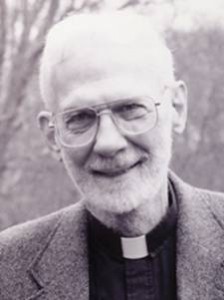When young-earth creationists question the constancy of nature, however, typically it is not because they have independent evidence to question it but because their belief in a young earth requires that nature behave inconstantly…Consider their response to ice sheets in Antarctica and Greenland, which appear to accumulate at a steady rate by forming annual layers (much as trees form annual rings). If one drills ice cores (sometimes one or two miles deep), present rates of accumulation suggest that the cores record more than one hundred thousand years of natural history (which, of course, exceeds the age of a young earth). Young-earth creationists therefore counter that as one goes down the core, compression of the ice destroys our ability to distinguish annual layers. W. Dembski, The End of Christianity (B&H 2009), 60-61.
I'll revisit this issue shortly, but for now I'd point out that Dembski's example doesn't seem to prove his contention. If anything, it backfires. In his example, young-earth creationists aren't challenging the ages attributed to ice-core samples by denying the steady rate of deposition. To the contrary, they are challenging the inference by appeal to another natural process: compression. The sheer weight the further you go down blurs the lines between one annual layer and another. So that doesn't require young-earth creationists to question the constancy of nature. Just the opposite: they rely on the constancy of nature in reference to the cumulative force of compression to challenge the chronological inference. Now, perhaps there's a better example to illustrate Dembski's contention.
In challenging the constancy of nature, young-earth creationists tacitly admit that the world, even if it is not actually old, appears to be old…Gosse argued that creation ex nihilo requires God to create world that gives the appearance of age even at the instant of creation…Scientists holding to an older earth saw it as flying in the face of the scientific evidence. And theologians holding to a God of truth saw it as turning nature into a divine hoax.
In its favor, this approach [mature creation] does not entail a flat contradiction. God in his omnipotence could presumably have done things that way. But absence of contradiction is about all that can be said in its favor. The shafts of light that God created independently of the stars (and that seemingly arise from them) project onto the earth a history of the cosmos that never in fact happen. For instance, if human astronomers see what appears to be a supernova exploding in a galaxy millions of light-years away, [Henry] Morris's approach means that no supernova ever exploded. Rather, God specifically created a beam of light six thousand years ago that has only now reached earth and that gives the appearance of a supernova exploding. In Morris's approach, astronomy is not about how actual stars looked in the distant past but about how fake stars might look in a 3-D animation made by God. It is difficult, in my view, to reconcile such a God with a God of truth (64,66-67).
i) There are several problems with Dembski's objection. One problem is that he can only lodge this objection consistently if he's a naive realist. For the moment he concedes a hiatus between appearance and reality, it's hard to see how he can draw the line. Take his own example. Due to the scale of the universe and the passage of time, the supernova we see in the telescope may no longer exist. It seems to exist. It seems to be a present-day reality. But because it took millions of years for the luminous image of the supernova to reach earth, the supernova may now be nonexistent. A thing of the past. Its present appearance is illusory. We must deny the evidence of our senses. Override our senses by making allowance for the time-lapse.
Dembski may object that the present image of a now-nonexistent object is different from the image of a never-existent object. However, that's a difference of degree rather than kind. It still concedes an illusion. A discrepancy between appearance and reality.
Moreover, it would be deceptive to an observer who lacks the necessary background information to correct for his inference. So we can't interpret the object in isolation to a larger interpretive framework.
Perhaps he'd say it's the difference between causal effects and causeless effects. Light from a fake supernova. The effect without the cause. But that isn't correct. For God created the light beam. At best, that would be a distinction between primary and secondary causality.
Incidentlly, what is Dembski's position on natural camouflage? Some fauna and flora employ camouflage for offensive or defensive purposes. Isn't that inherently deceptive?
ii) But, if anything, Dembski's objection suffers from a deeper problem. Because it conflicts with another one of his commitments. In the same book he also says:
"All things are created twice: There's a mental or first creation, and a physical or second creation to all things." Creation always starts with an idea and ends up with a thing. Anything achieved must first be conceived. Creation is thus a process bounded by conception at one end and realization at the other (107).
But if we develop that principle, then it's misleading for Dembski to say:
God specifically created a beam of light six thousand years ago that has only now reached earth and that gives the appearance of a supernova exploding. In Morris's approach, astronomy is not about how actual stars looked in the distant past but about how fake stars might look in a 3-D animation made by God. It is difficult, in my view, to reconcile such a God with a God of truth.
For in God's mind, there are an infinite number of different world narratives. Various ways the world might have been. Unexemplified possibilities branching out in all directions. Narratives that extend backwards and forwards in God's imagination. Alternate futures and alternate pasts.
Creation involves God instantiating a divine preconception. God concretely exemplifies a preconceived idea in space and time. The supernova first exists in the mind of God, as a divine idea. And that supernova can belong to a number of different world scenarios. There's no particular world it has to go with. Although the supernova is part of a past that didn't take place in our world, it's a carryover from another world, representing the borderland between possible and actual worlds. The 6000-year-old light beam objectifies a timeless light beam in God's mind. A light beam in a story, a mental story, with alternate beginnings and endings. When God makes the world ex nihilo, he begins the story in media res.
That's analogous to how humans begin stories. If a director makes a Western, the story doesn't begin with the origin of the universe. He jumps right into the 19C, as if those hills had always been there, or popped into existence a moment before.
Suppose God creates a beach ex nihilo. Normally, beaches are the end-result of a long, gradual, cyclical process. If God made a beach ex nihilo, would that be a "divine hoax"? Does Dembski think it's unethical for God to make a beach ex nihilo? Does that involve fake erosion?
I think the universe is to God what a snow globe is to us. Living within the snow globe, it all seems very real to us. That's our only frame of reference. The snow doesn't seem to be fake snow. The laws of the snow globe seem ultimate to someone inside the snow globe. When the snow globe is shaken by an outside force, an unseen hand, the interior fills with flakes, that slowly settle.
And it isn't an illusion. The snow globe is real. The miniature landscape is physical. Internal events are real. Snowflakes really fall.
Yet, if we take a God's-eye view of the snow globe, that perspective is quite limited and limiting. In his objection to mature creation, Dembski is like a fist-shaking inhabitant of the snow globe. He takes it a bit too seriously.
iii) Finally, Dembski overlooks the fact that science is circular. Science has axiomatic givens. So the question is how or where to break into the circle. Where's the right place to break into the circle? Where do we start? How do we start?
For instance, science takes time for granted. But what is time? What's the correct theory of time? The A theory? The B theory? Likewise, is our temporal metric intrinsic or extrinsic to time?
Science takes space for granted. But what's the correct geometry of space?
Moreover, we can't prove the existence of real space. The external world seems to be real. And that has explanatory simplicity. But we lack direct access to space.
We depend on our perception of time and space. We can never get behind appearances. Peel back one appearance, and there's another appearance underneath. Layers of appearances all the way down.
Yes, there's something objective that generates the appearances. But perception digs down to bedrock.
Does our mental representation of the external world match up? How could you tell if you can never compare them directly?
In science, there's a dialectical tension between change and continuity. Without change, you can't have natural processes. Yet you can't have too much change and still have the stability and predictability necessary for science.
Science wants a law-like universe. But what are natural laws? There are radically different models. Take the view that natural laws have no inherent causal efficacy. God confers causal efficacy on natural laws, but because that's superimposed from the outside by the ultimate agent, God can bypass these natural agencies at will. A scientist may prefer a closed-system model, but he has no independent evidence for that preference, for his interpretation of natural evidence presupposes his model of natural laws–and other givens.
That's why science is ultimately dependent on theology. On theological presuppositions. That supplies the key. The proper starting-point. Otherwise, anywhere you break into the circle will be arbitrary.



